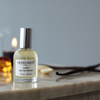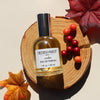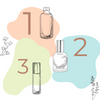Shaving with Oils

What’s in your shaving foam?
Lots of women don’t hesitate to pick up that pink bottle of shaving gel/foam pressurized combo. That’s what we’re supposed to use when shaving, right? But where did this product come from? What’s actually in it? And what are the benefits?
Shaving foam history in a nutshell
From the Romans to the Renaissance, the world used oils or shaving soaps to shave. In the 1900s, major chemical and industrial advancements changed the shaving game. The first shaving foam was introduced in 1949. Consumers at the time were in awe of these products- so novel and convenient (sort of)!
The EPA banned pressurized shaving creams containing chlorofluorocarbons in the 1970s, thought to be detrimental to the ozone layer. Companies started substituting CFCs with other gaseous mixtures such as propane, butane, and isobutane, and mixing in more water to reduce the flammability of the pressurized cans. And Americans continued to adopt the modern foam, but were but mired in razor burn and harmful chemicals in the process.
In 1993, Proctor & Gamble developed the first pressurized shaving gel which turned to foam after applying. Women jumped on the bandwagon, selecting specialized shaving gels in pink bottles marketed just for the shaving requirements of ladies!
What’s the problem with shaving gels and foams?
Take a quick glance at the ingredients in some of the most popular shaving foam products out there and you’ll find lots of chemicals. Triethanolamine is a skin and respiratory toxicant that appears in many shave foams; Isobutane is a highly flammable chemical used to squeeze out the pressurized liquid; along with a whole host of other artificial colors and fragrances.
And while foaming shave creams are fun and interesting (especially those that go from gel to foam before your eyes!), even the gentlest of foaming cleansers can be too drying for those with dry or sensitive skin.
Try shaving with oils instead
Shaving with an oil will cut your razor burn, nicks and cuts, and will help lessen ingrown hairs. Not to mention your shave will be faster, cleaner, and smoother, with no random bits of foam to wash away. And you don’t have to moisturize afterward. It’s a two-in-one!
Here’s how to do it:
1. Wet your skin2. Rub oil on
3. Shave
4. Admire
What’s better than shaving with an oil? Shaving with an oil that smells DIVINE! Check out one of our Bath & Body Oils. Your shimmering legs will thank you.
-
Posted in
bath, fragrance, history, oil, plant therapy, razor burn, rituals, sensitive skin, shaving, therapeutic









